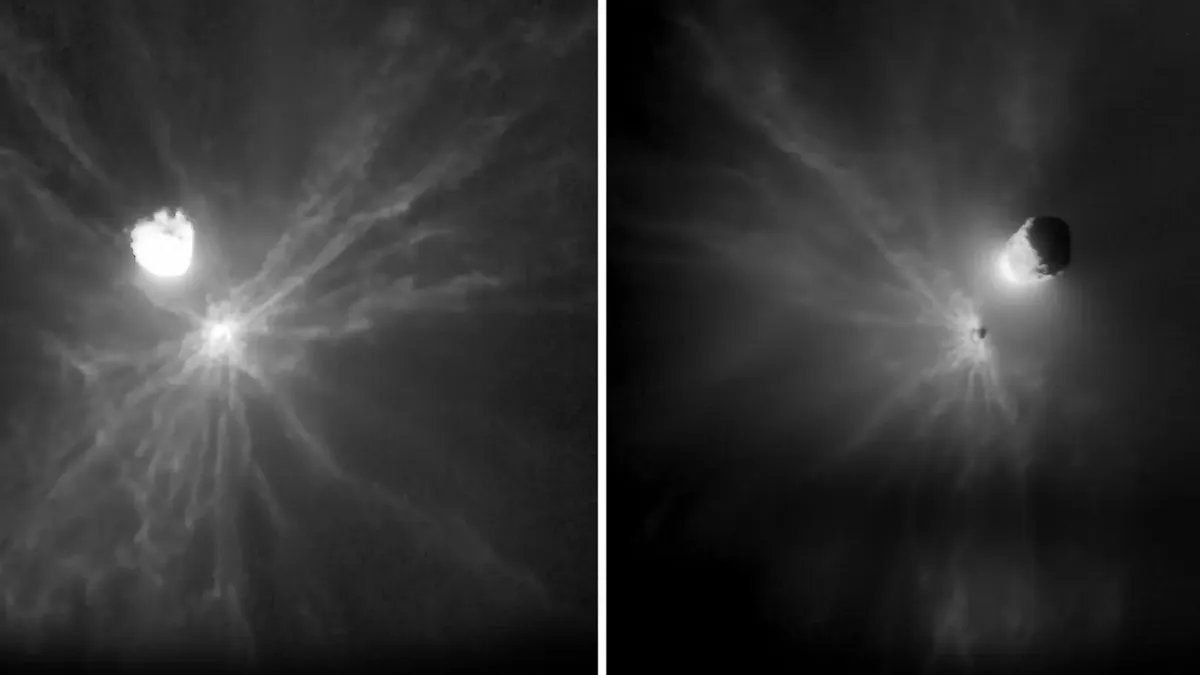
Three years ago, NASA made headlines by successfully executing a daring mission that involved deliberately colliding a spacecraft with a large asteroid. This groundbreaking event not only altered the course of the asteroid but also showcased humankind’s potential to safeguard our planet from hazardous space rocks in the future. However, a recent analysis has raised concerns about the debris behavior resulting from this monumental collision, leading to questions regarding the effectiveness of future asteroid-deflecting missions.
On September 26, 2022, NASA's Double Asteroid Redirection Test (DART) spacecraft collided with the asteroid Dimorphos at an astonishing speed of approximately 15,000 mph (24,000 km/h). The mission was hailed as a tremendous success, not only because it successfully altered Dimorphos' trajectory—reducing its orbit around its partner asteroid Didymos by about 30 minutes—but also because it dramatically changed the asteroid's shape. This collision took place over 7 million miles (11 million kilometers) from Earth, demonstrating the viability of the kinetic impactor method as a defense strategy against potentially hazardous asteroids.
Despite the initial success, a new study published on July 4 in The Planetary Science Journal has unveiled a hidden complication. Researchers discovered that dozens of large boulders, dislodged from the asteroid during the collision, are exhibiting unexpected behaviors. These boulders are reportedly traveling with greater momentum than anticipated and have formed non-random patterns in space.
The research team utilized images from the European Space Agency's (ESA) Light Italian Cubesat for Imaging of Asteroids (LICIACube), which accompanied DART to observe the collision. This analysis allowed them to track 104 boulders, ranging from 0.7 to 11.8 feet (0.2 to 3.6 meters) in size, as they were propelled away from Dimorphos. The primary finding indicated that these boulders possess approximately three times more momentum than predicted, likely due to an additional force imparted during their ejection from the asteroid's surface, according to study lead author Tony Farnham, an astronomer at the University of Maryland.
The study also noted that the boulders did not scatter randomly into space. Instead, they formed distinct clusters, with significant amounts of empty space surrounding them. Farnham stated, "We saw that the boulders weren't scattered randomly in space. Instead, they were clustered in two pretty distinct groups." This unusual arrangement suggests that there may be unknown factors influencing the behavior of the debris.
The research team aims to deepen their understanding of these unexpected findings to ensure thorough preparedness for future asteroid defense missions. Jessica Sunshine, a co-author of the study and astronomer at the University of Maryland, emphasized the importance of these subtleties. "If an asteroid were headed towards us, and we needed to shift it a specific amount to prevent a collision with Earth, then all these variables become crucial," she remarked, likening the situation to a cosmic pool game.
This is not the first instance of unexpected outcomes from the DART mission. In April 2024, researchers indicated that some of the largest boulders ejected from Dimorphos might find themselves on a collision path with Mars, potentially impacting any human colonies that may exist there in about 6,000 years. Additionally, simulations utilizing LICIACube data suggested that smaller fragments could reach Earth in approximately 30 years, resulting in a spectacular meteor shower, although they currently pose no real threat to our planet.
Despite these uncertainties, the kinetic impactor method remains the most promising strategy for protecting Earth from dangerous asteroid collisions. This topic gained renewed attention earlier this year when the asteroid 2024 YR4 was initially thought to have a 3% chance of colliding with Earth in 2032. While those odds have since dropped to zero, experts are eager to continue discussions on asteroid threats, especially in light of proposed budget cuts to NASA by the Trump administration, which could hinder our ability to detect hazardous space rocks.